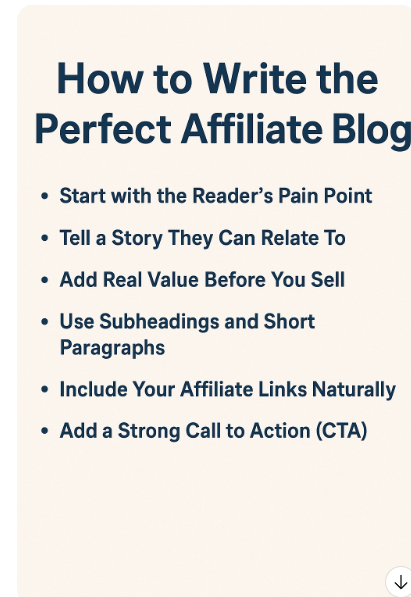What Is the Best Way to Write an Affiliate Blog? A few smaall things lay in the way of success or failure in search results
Blog by Peter Hanley, coachhanley.com
Ever sit down to write an affiliate post and stare at a blank screen, wondering where to begin? You’re not alone. Many affiliate marketers struggle with how to write blogs that not only attract readers but also make sales. The good news? With the right structure and mindset, anyone can write affiliate blogs that work.
Let’s walk through how to do it right — step by step.
Start with the Reader’s Pain Point
Every great affiliate post begins with a problem.
Your readers are searching for answers — not products.
Think about what they’re struggling with. Maybe they’re tired of working long hours for little pay. Maybe they’re overwhelmed by tech or frustrated by online “gurus.”
Start your post by talking directly about that pain. When people feel you understand their problem, they’re more likely to trust your solution.
Example:
“Are you tired of trying every side hustle under the sun and still not seeing results?”
Boom — you’ve grabbed their attention.
Tell a Story They Can Relate To
Stories connect people.
Talk about your journey — how you faced similar struggles and what you learned. Be honest. Readers don’t want perfection; they want progress.
Even if you’re new, you can write from the perspective of learning alongside them. That builds authenticity and keeps your tone friendly, not salesy.
Add Real Value Before You Sell
Here’s the truth: value first, sales second.
Your blog should teach something useful — maybe how to find keywords, set up a simple funnel, or choose beginner-friendly affiliate programs. When you give value freely, readers start to see you as a trusted guide.
Then, when you recommend a product, it feels natural — not pushy.
Use Subheadings and Short Paragraphs
Online readers skim. Big blocks of text turn them off.
So, make your blog easy to read:
- Use subheadings for every key point
- Keep paragraphs to 2–3 sentences
- Use bullet lists where you can
- Add transition words like next, meanwhile, or finally to keep the flow smooth
The goal is clarity, not complexity.
Include Your Affiliate Links Naturally
Don’t just dump links everywhere. Place them where they make sense.
For example:
“I started using Wealthy Affiliate to learn proper SEO and build my first website — and it changed everything.”
See? Natural, helpful, and part of the story.
Use one main link early in the post and one near the end. Make sure they point to something that genuinely benefits your reader — not just your commission.
Add a Strong Call to Action (CTA)
Your reader needs direction.
End every post with a clear, friendly CTA that tells them exactly what to do next.
Example:
“If you’re ready to start your affiliate journey the right way, join AI millionaire today. Learn, build, and grow — all in one place.”
A CTA should feel like the next logical step, not a sales pitch.
Make It Personal and Consistent
Your readers come back because they like you.
So, write in your own voice — like you’re chatting with a friend over coffee. Don’t try to sound like a corporate marketer.
And post regularly. One blog every few weeks won’t build momentum. Even one good post per week keeps your site alive in Google’s eyes and your audience’s hearts.
Final Thoughts
Affiliate blogs aren’t about clever tricks or perfect grammar — they’re about connection.
Understand your reader’s problem, offer genuine help, and recommend tools that truly make a difference.
Do that, and your posts won’t just attract clicks… they’ll create loyal followers.
Call to Action
Ready to learn how to write blogs that actually earn?
👉AI Millionaire— get all the training, tools, and support you need to start your affiliate blogging journey today!

